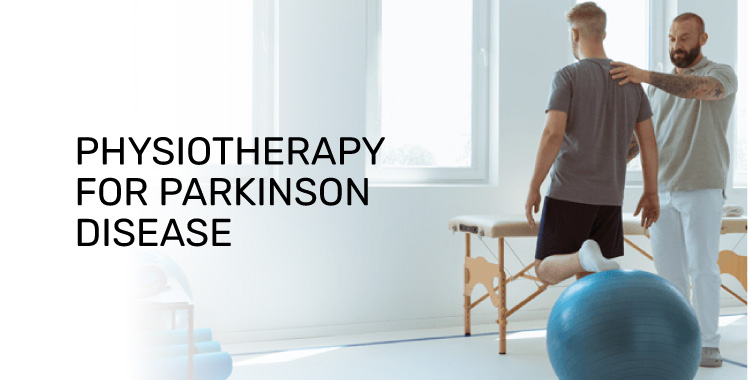

Parkinson's disease (PD) is a chronic, progressive neurological disorder that affects movement. The symptoms of Parkinson's disease can be debilitating and may lead to difficulty in performing daily activities. Physiotherapy For Parkinson's can be an effective treatment option for people living with this disease.
Parkinson's Disease Physiotherapy Treatment helps to reduce symptoms like rigidity, bradykinesia, tremors, imbalance, and falls and improves mobility, flexibility, muscle strength, balance, and walking.
In this blog, we will discuss the benefits of Physiotherapy for Parkinson's Disease and help patients understand the different exercises and techniques that may be used during their treatment.
Flexibility exercises are essential to physiotherapy for people with Parkinson's disease. These exercises aim to maintain and improve muscle flexibility and joint mobility. Some common Flexibility and ROM exercises include hamstring stretch, pectoral stretch, back extension exercises, trunk rotation exercises, calf muscle stretch, neck rotations, shoulder shrugs, wrist rotations, and ankle flexion and extension.
-exercises.jpg)
Parkinson's Disease Physiotherapy Treatment includes Aerobic exercises, also known as cardiovascular exercises, which can help improve overall fitness and reduce the risk of cardiovascular disease. Examples of aerobic exercises include brisk walking, cycling, and swimming.
Image
LSVT BIG® therapy is a specific type of physiotherapy designed for people with Parkinson's disease. This therapy uses intensive and repetitive movements to improve motor function and reduce movement-related symptoms. LSVT BIG® therapy includes exercises such as high steps, large arm movements, and exaggerated movements.
Image
Parkinson's yoga is a complementary therapy that has been shown to help improve flexibility, balance, strength, and overall well-being in people with Parkinson's disease. The practice combines traditional yoga postures with modifications to help address the specific motor symptoms associated with Parkinson's disease, such as tremors and rigidity. Yoga may also help reduce stress and improve mood, which can be particularly beneficial for people with chronic conditions like Parkinson's. However, it's important to consult with a healthcare provider before starting any new exercise program, including yoga, to ensure safety and appropriateness.
Along with physiotherapy a Parkinson's patient may require speech therapy and occupational therapy to improve speech and ADL functions.
Image
Speech therapy is a common intervention for people with Parkinson's disease who experience speech and communication difficulties, which can include slurred or mumbled speech, soft voice, and difficulty with articulation and pronunciation. A speech-language pathologist can work with individuals with Parkinson's disease to help them improve their speech clarity, volume, and intonation, as well as their ability to communicate effectively with others. Speech therapy may also include exercises to improve breathing and swallowing, which can also be affected by Parkinson's disease. With regular practice and guidance from a speech-language pathologist, individuals with Parkinson's disease can often see improvements in their ability to communicate clearly and confidently
Image
ADL (activities of daily living) training is an important aspect of Parkinson's disease management, as the condition can often interfere with the ability to perform basic tasks such as bathing, dressing, and grooming. Occupational therapists can work with individuals with Parkinson's disease to help them develop strategies and techniques to improve their ability to carry out daily tasks safely and independently. ADL training may include exercises to improve hand dexterity and coordination, as well as strategies to conserve energy and reduce the risk of falls. By focusing on improving these functional abilities, ADL training can help individuals with Parkinson's disease maintain their independence and improve their overall quality of life
Image
Physiotherapy, Speech therapy, and occupational therapy can be effective treatment options for people with Parkinson's disease. Physiotherapy For Parkinson's can help improve movement, reduce symptoms, and increase the overall quality of life. If you or your loved one has Parkinson's disease, speak to your healthcare provider about incorporating Physiotherapy for Parkinson's Disease into your treatment plan.